
Us and Them: Ethnocentrism and Racism
As any demagogue will tell you, if you want to instill a certain belief in a population, get ‘em while they’re young. Children are generally short on life experience, and must rely on adults for much of their information about the world. This provides the perfect opportunity for a culture to pass down its worst qualities – racism, xenophobia, imperialism, etc. –to the next generation.
 |
Picture Alphabet of Nations of the World . London: Nelson, 1874. [zoom] |
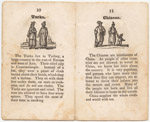 |
A Description of Various Nations . Concord, N.H.: R. Merrill, 1843. [zoom] Rudyard Kipling coined the phrase “White Man’s Burden” to describe the moral obligation of white people to “civilize” other races (while taking over their land, enslaving their people, destroying their heritage and getting rich off their resources). This imperialist sentiment pervades the depiction of non-white cultures in English and American books well into the 20th century. |
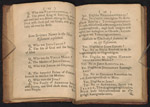 |
Daniel Claus. A Primer for the Use of the Mohawk Children: To Acquire the Spelling and Reading of Their Own: As Well as to Get Acquainted With the English Tongue, Which for That Purpose is Put on the Opposite Page … Montreal: F. Mesplets, 1781. [zoom] Before the formalized 19th century movement to round up Native American children and indoctrinate them in boarding schools, missionaries were using texts like this to catechize them in the English language and Christian dogma simultaneously. |
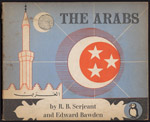 |
R.B. Serjeant. The Arabs. Illustrated by Edward Bawden. Harmondsworth, Middlesex: Penguin Books, ca. 1945. [zoom] Additional images: 
Serjeant, a Cambridge professor of Arabic, spent many years in the Middle East, and his book shows a sincere effort to present the history and culture of the region with accuracy. Nevertheless, subtle racism and imperialism are detectable in illustrations like this one, depicting the savagery of the Battle of al-Qādisiyyah. |
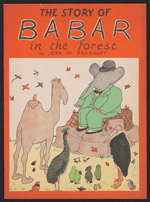 |
Jean de Brunhoff. The Story of Babar in the Forest. Racine, Wis.: Whitman, ca. 1933. [zoom] A young elephant leaves the jungle for the big city, where he is educated by humans and develops a taste for fine clothing. When he returns, he is crowned King of the elephants and brings a distinctly Western “civilization” to his kingdom. It’s not too hard to see Babar’s stories as a glorification of French colonialism. |
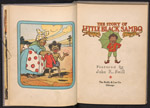 |
Helen Bannerman. The Story of Little Black Sambo. Illustrated by John R. Neill. Chicago, Ill.: Reilly & Lee, ca. 1908. [zoom] This may be the most controversial children’s story ever published, all because of one word in the title. Bannerman’s illustrations (as well as the inclusion of tigers and ghee) in the original 1899 London edition indicate that Sambo is set in India, where the Scottish author lived for several decades. But the popular story was pirated and republished in the U.S. with caricatured illustrations that recast “black” Sambo as African or African American, and a new icon of racism was born. Ironically, besides the word “black” there’s nothing offensive about the story itself – Sambo is clever and resourceful, his parents are responsible and kind, and they all speak the Queen’s English. |
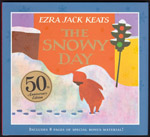 |
Ezra Jack Keats. The Snowy Day. 50th anniversary special edition. New York: Viking, 2011. [zoom] Additional images: 
This sweet little gem was the one of the first picture books to feature a non-caricatured African American protagonist, which is all the more remarkable because his race has nothing to do with the story. It’s not about a black boy playing in the snow; it’s about a boy playing in the snow, who just happens to be black. Keats won the 1963 Caldecott Medal for his distinctive collage illustrations, but he also caught a lot of flack for not verbally acknowledging Peter’s race, for depicting his mother as a heavyset woman in a yellow dress (which some thought was a little Aunt Jemima-ish), and for daring to portray an African American at all, since Keats was actually white. |
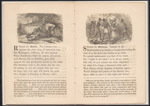 |
Abel C. Thomas. The Gospel of Slavery: A Primer of Freedom. New York: Published by T.W. Strong, 1864. [zoom] Children’s literature can be used in support of all kinds of political movements. This abolitionist alphabet book teaches children about the evils of slavery along with their ABCs. |
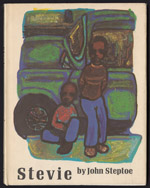 |
John Steptoe. Stevie. New York: Harper & Row, 1969. [zoom] One of the most consistent complaints about Western children’s literature is the disproportionately small number of non-white authors and illustrators in publication. Steptoe was one of the first to break through that barrier, and in doing so he gave readers an honest glimpse into the lives of urban African Americans. His illustrations depict children playing on stoops and in cramped apartments, and his characters speak in an authentic dialect. |